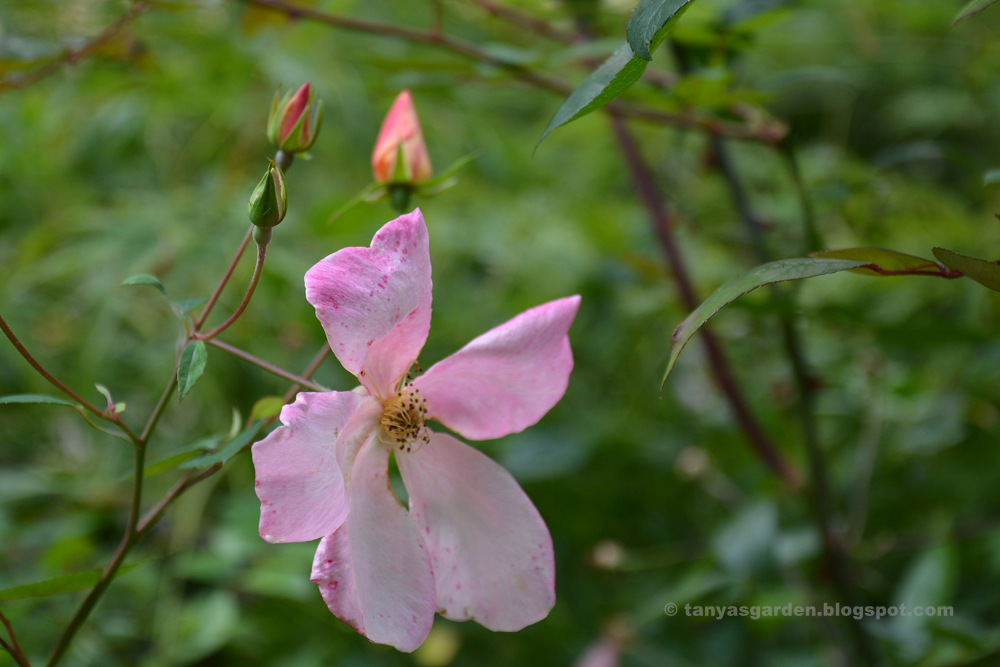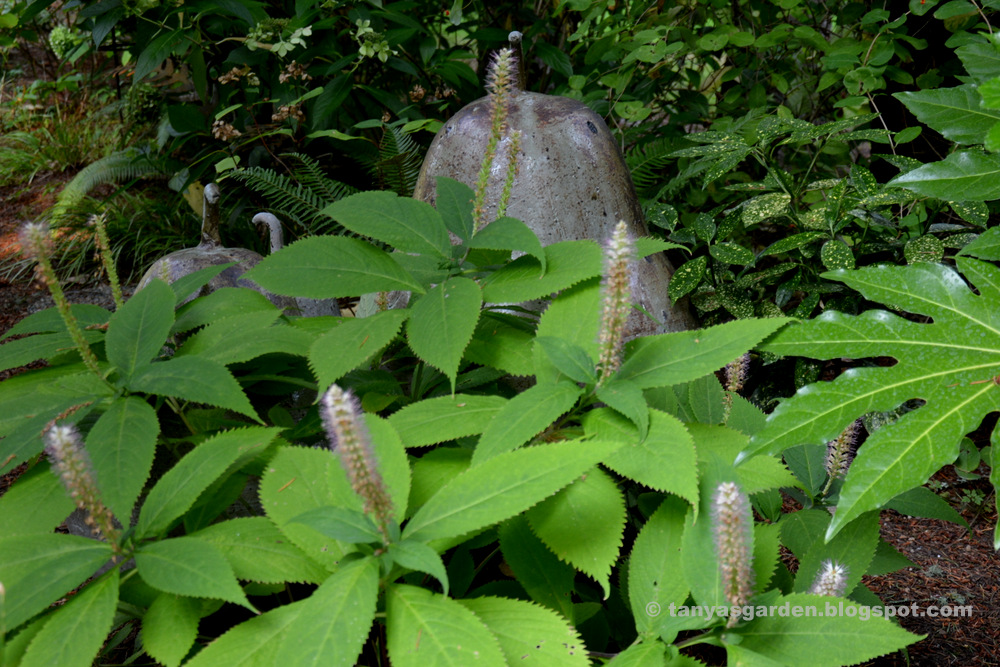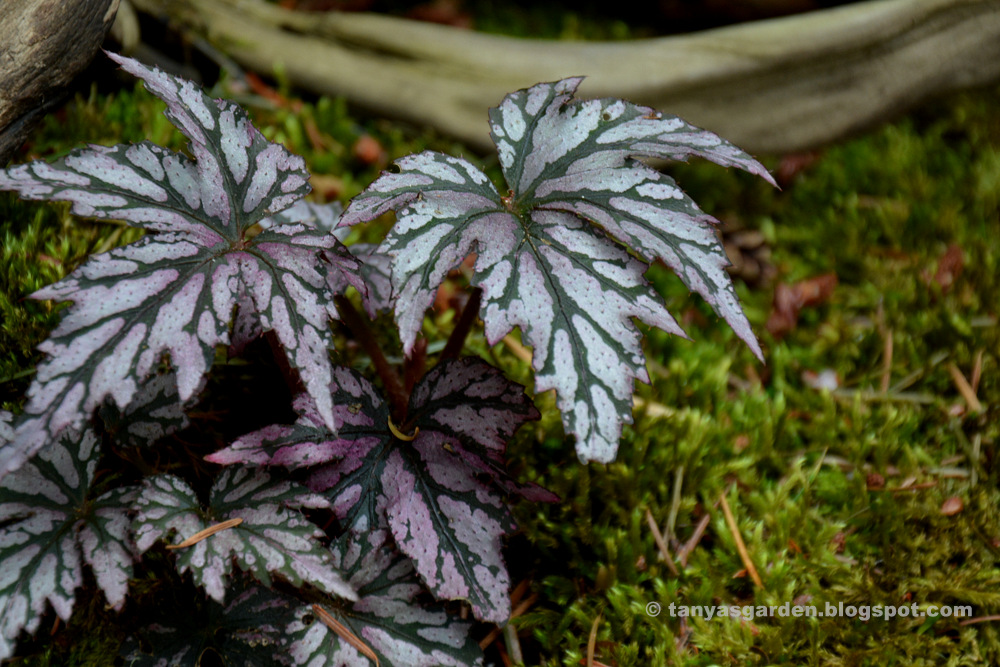A few pictures from my September garden.
This year, at last, I planted asters. This type of asters - I don't see many of them around. It has, probably, something to do with the fact that they can't be grown in the same spot every year; they need to be moved to a different place to avoid disease. Do you grow this type (Callistephus chinensisa, Chinese aster, Annual aster)?
While growing up in the Russian Far East, I first saw fuchsia plants at my grandmother's country house. They were houseplants, happily growing in pots for several years and blooming nicely. We didn't have hardy fuchsias that could withstand the winters of up to minus 30 degrees F.
Now, I grow several varieties of overwintering fuchsias in my garden, but it's still a wonder for me to see their flowers under December snow.
Roses and perennial phlox were the stars of my September garden. I started to remove phloxes shown in the next picture, from my Terrace Garden. They tend to be tall and floppy. They bend to the ground after rains and winds. I discard some of them and move others to different spots.
I consider Salvia guaranitica Black and Blue to be a garden's working horse - it's been blooming from August to October.
My working table is hosting pieces of garden décor, dry bouquets, etc. in preparation for fall cleaning
The fountain area was also a spot for the fall preparations:
There are white, pale-pink and purple cyclamen in my garden, and I love them all.
Persicaria is continuing to surround The Cat With the Fiddle.
For a long time, I resisted planting it in my garden. I suspect that some childhood memories contributed to that resistance. We had native species of persicaria (Persicaria extremiorientalis,
Far-eastern smartweed probably) where I grew up as a child. While playing, we sometimes touched the plants and then rubbed our eyes. That caused a very painful burning sensation and tears. Modern persicaria hybrids carry very little resemblance to our short, dark-leaved plants, but the memories somehow created associations.
Dichroa febrifuga, Blue evergreen hydrangea, Chinese quinine
Leucosceptrum stellipilum ‘Ogon', Japanese Bush Mint.
The leaves which I touched didn't smell like mint, but the flowers did!
Impatiens omeiana is doing much better in its new spot, shady and moist.
Begonia benitochiba from Windcliff
This plant has somewhat of a stunted growth in my garden, although I moved it already twice. Need to make some research.
Billardiera longiflora, Purple apple-berry, fruit
I've been very pleased with Brugmansia, Angel's Trumpets, which is a new plant in my garden. I got it in early summer as a small start, and now it's having a second bloom wave.
Musella lasiocarpa, Chinese Yellow Banana:
Clematis rooguchi had more seed heads than flowers in September
Hedychium, Ginger Lily
New in my garden - Coniogramme emeiensis Golden Zebra
My best garden decor element. First, he was pretending to enjoy the flower, then he moved his orange ball to the patch of soft saxsifrage, and finally he made a comfortable bed for himself there:
At the end, I'm posting these two pictures to remind myself of a week in September when the whole Pacific Northwest experienced record wildfires, and we tried to stay home to avoid breathing toxic smoky air. The pictures have a yellowish tint, although not the worst we had. I went outside just for several shots only when it was possible to breathe more or less normally.
***
I didn't take many pictures in September. My September garden was very much like my August garden (its pictures were shown in the post Summer Garden Moments .
THANK YOU FOR VISITING!








































I haven't planted Persicaria either because it is too much like the weed we had to hoe out of the crop fields when I was growing up in the Willamette Valley.
ReplyDeleteAs always, your photos are beautiful, as is the garden from which they came.
Linda, thank you so much for stopping by and leaving a comment! I think Willamette Valley is one of the most beautiful places in the country! What a great place to grow up in!
ReplyDeleteTatyana you have so many spectacular plants and flowers in your garden. I wouldn't have a plant that I 'had' to move yearly. I would probably forget to do it after a year or so. I am always surprised to see fuchsias growing as shrubs. Around here they never get out of a hanging pot.
ReplyDeleteHi Lisa! Thank you for visiting! Chinese asters are annuals and need to be seeded every year. So, planting seeds in a new spot every year is easier for me than moving plants. As you, I wouldn't like to move plants so often :)!
DeleteShrubby fuchsia still amaze me too!
Mmmm, I want to visit your garden! It's so lush and beautiful in every garden, but especially now. My favorites are the ginger lilies, the impatiens and the fuchsias.
ReplyDeleteI'd be happy to see you in my garden, Beth! Thank you!
DeleteThank you for sharing.
ReplyDeleteThank you so much for visiting! I'm always glad to see you!
DeleteI so enjoy your blog posts, especially because our climates are so different, making our garden choices so different. My dry garden doesn’t keep phlox growing for long, and that coral variety you featured are awesome. What if you used a peony hoop to hold them up?
ReplyDeleteThank you, Robin! You are so right -I need to use supports for that phlox. It oversmarts me every summer - the plants look great until strong wind comes and then they fall. And every summer I hope that they won't fall! :)))
Delete